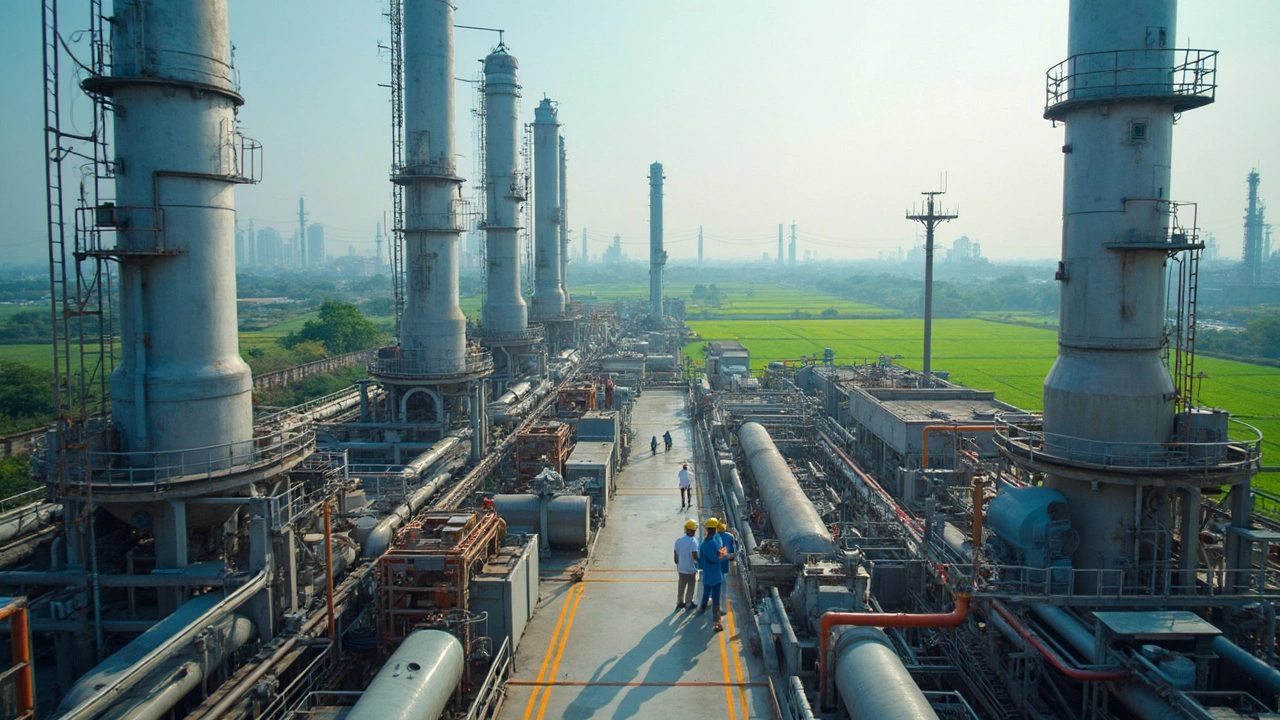Largest Chemical Producer – What You Need to Know
When you hear the words "largest chemical producer" you probably think of giant plants, huge export numbers, and a lot of raw material moving around. That’s right – size matters a lot in chemicals because bigger plants can cut costs, keep prices low, and meet big orders fast.
In India, the chemical sector is growing at a rapid pace. New policies, better infrastructure, and more skilled workers are helping local companies compete with the world’s biggest names. If you’re looking to partner with a supplier, invest in the market, or just understand the landscape, this guide will give you the basics you need.
Why Size Matters in Chemical Production
Large plants have three clear advantages. First, they can buy raw materials in bulk, which lowers the cost per kilogram. Second, they can spread fixed costs like equipment and safety systems over more output, making each batch cheaper. Third, they can invest in advanced technology that small players can’t afford, which improves product quality and reduces waste.
These benefits translate into lower prices for downstream users – from pharma makers to plastic producers. It also means more stable supply because bigger companies usually have backup power, multiple production lines, and stronger logistics networks.
Top Players and Emerging Trends
Some of the biggest names in India’s chemical space are headquartered in industrial hubs like Gujarat, Maharashtra, and Tamil Nadu. Companies such as Reliance Industries, Indian Oil Corporation, and Deepak Nitrite dominate large‑scale production of petrochemicals, fertilizers, and specialty chemicals.
Beyond the giants, a few new entrants are making a splash. Start‑ups focusing on green chemistry, bio‑based polymers, and waste‑to‑chemical technologies are attracting investment. They often partner with the big players for scale while offering innovative, eco‑friendly products.
Regulation also plays a big role. The government’s ban on certain hazardous chemicals pushes producers to adopt safer alternatives. This creates opportunities for companies that can quickly switch to compliant formulas and still keep output high.
For anyone watching the market, keep an eye on three signals: (1) capacity expansions announced by major firms, (2) shifts in export volumes, and (3) policy updates on chemical safety. Together they give a clear picture of who’s really leading.
If you need to find a supplier, start by checking the production capacity listed on company websites or industry reports. Look for plants that can handle the volume you need and have certifications for quality and safety. Don’t forget to ask about their waste‑management practices – bigger doesn’t always mean greener, but many top producers are investing heavily in sustainability.
In short, the largest chemical producers in India offer cost advantages, reliable supply, and growing innovation. Knowing where they operate, what they produce, and how they comply with regulations will help you make smarter decisions, whether you’re buying, investing, or just staying informed.
Ready to explore more? Browse the articles below to see how the biggest pharma hubs, banned chemicals, and synthetic textile manufacturers fit into the same industrial puzzle.
Which is the Largest Chemical Manufacturer in India?
India's chemical industry is a vital part of its economy, contributing significantly to GDP and employment. The largest chemical manufacturer in India is a key player in both domestic and international markets. It leads in production capacity, innovation, and market reach. Understanding their impact can provide insights into the dynamics of the industry and future trends.
Read More




